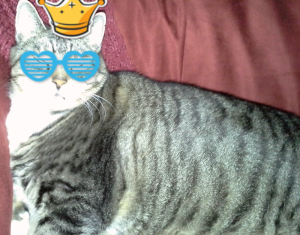Most fiction writers dread hearing a reader, agent or editor say that the carefully constructed character in your novel is someone they just “couldn’t connect with.” Ouch! Even worse, someone says your characters are flat, cardboard or stereotypical in some way. Double ouch!
Writing Tip for Today: You know everything about your character, but does your reader? Here are some ideas for fleshing out those problem characters.
Go from General to Particular
When you create a character, you draw upon years of observation as well as years of other writers’ characters. Some of the traits you have absorbed along the way are cliché now–even if they weren’t at the time the story was written. Unfortunately, those clichés are also stored in the collective minds of the readers. If you write a character who twirls a mustache, readers will think “bad guy,” and maybe even “cheesy lame-o bad guy.” What can you do to force readers to believe your character is real and different? One way to do this is to move away from generality and toward the particular. Avoid those general clichés (could be anything from an antagonist sucking on a toothpick to a California blond tossing her hair back) and study a few real people. Invent your characters by combining more than one real person’s habits or appearances. For instance, you might use one person’s looks and another’s temperament. Another trick–used by memoirists afraid of being sued–is to make the character the opposite sex of the person you draw upon for inspiration. Anne Lamott advises writers to make certain private parts very very tiny so no real person would ever claim to be that person. What ever you do, when you build characters try to identify specific and particular aspects of real people.
Create Instant Pictures
Another stumbling block to good character development is relying too much upon outer appearances. Some writers detail a character’s clothing from head to toe, narrate their background and education and then expect readers to see a well-developed character. In truth, we often form opinions about others based on a very rapid assessment. When we see others for the first time, only a few things stand out in our memories. If a character has on red suspenders, we will likely remember that detail. Only a certain type of person wears suspenders, so it gives readers a lot of information. Is the person overweight? Underweight? A country bumpkin or a lawyer? We won’t care about his shoes unless they too speak volumes about the character. Use a swift description of the character as if readers just bumped into that character on the street. The things you draw attention to will help shape that character for readers.
Keep the Camera Close
The third way to write better characters is to remember to keep the camera close. We all have rich inner lives, but if you write scenes without a balance of outer action to inner life, characters may read as shallow or uninteresting. Readers want to either BE the character or else be very close to that character as they move through the scenes. The moment you zoom out, you begin to dilute how readers experience the character’s emotions. Since readers will base their sympathies on this quality more than any other, you’ll want to be sure you don’t keep the camera pulled back for too long–especially at important decision points (plot points). Characters don’t need to be perfect, but you as the writer must convey them in specific ways that take it the overall impression and understand the character’s emotions.
What gives you the most trouble about character development? What are some ways you deal with it?






I used to find it difficult to find balance between too much backstory and enough to give the reader a better understanding of who my characters are as people until I learned about the three dimensions of character. That’s really helped me a lot with crafting more well-rounded characters. For instance, how they walk– strut, saunter, etc. gives a good impression of a confident person — posture, and scent. I find just choosing a certain perfume can enhance a character. For example, Channel No. 5 would be a more mature woman than, say, Poison. An unshaven man with grease under his fingernails speaks volumes. That’s not to say I still don’t struggle to find that happy medium, but that’s what second drafts are for. 🙂
Thanks, Sue,
for your great comment. Yup, those little details are much more powerful than the most thorough description.
Backstory! Always the writer’s dilemma. I have a lot of posts on it if you’re interested. But you’re right–that’s what second (and third, fourth, etc) drafts are for.
Keep Writing,
Linda